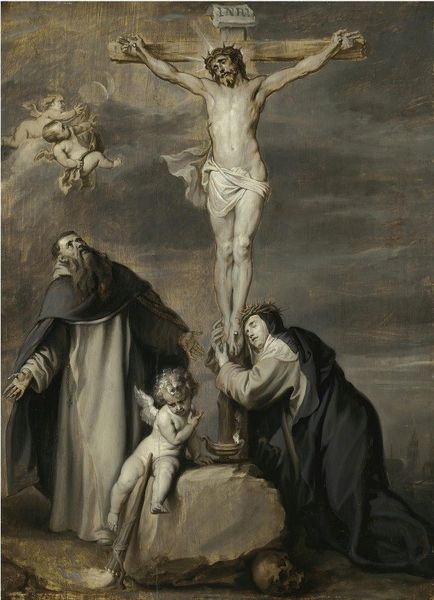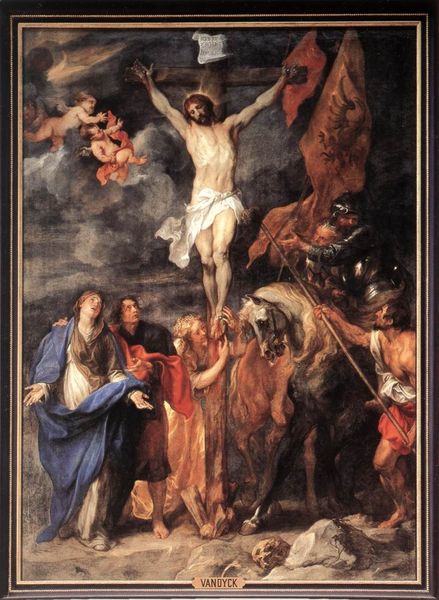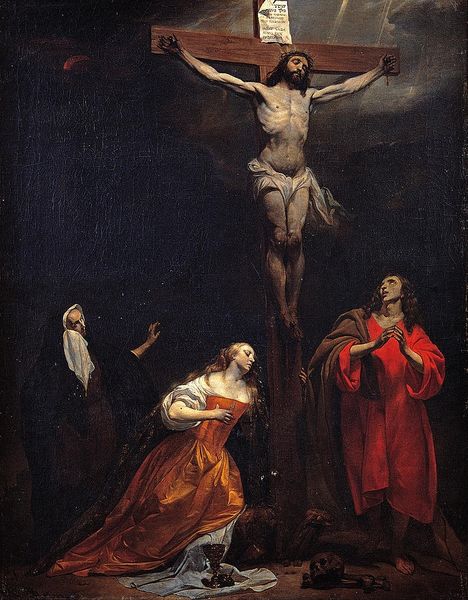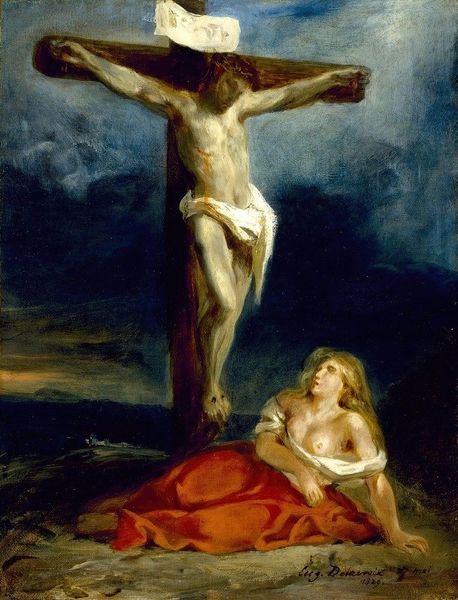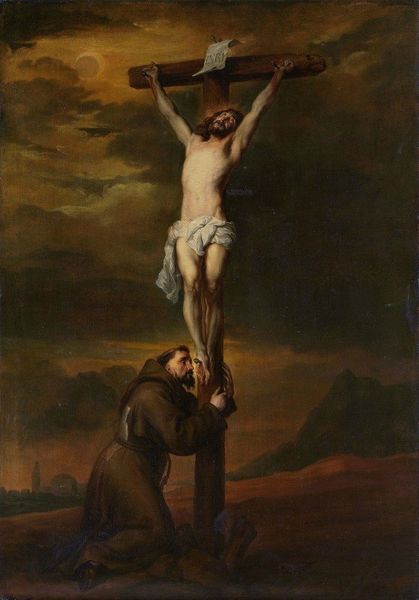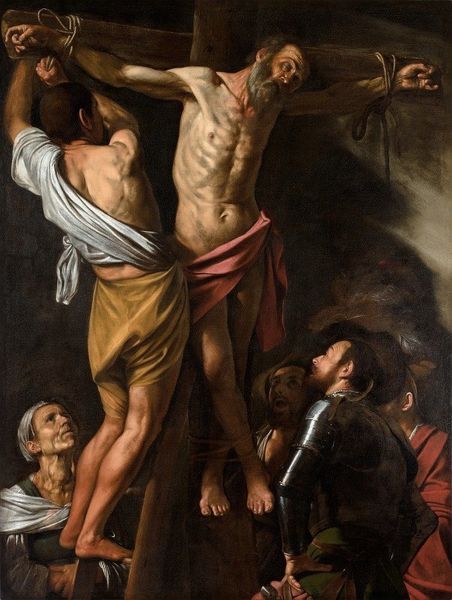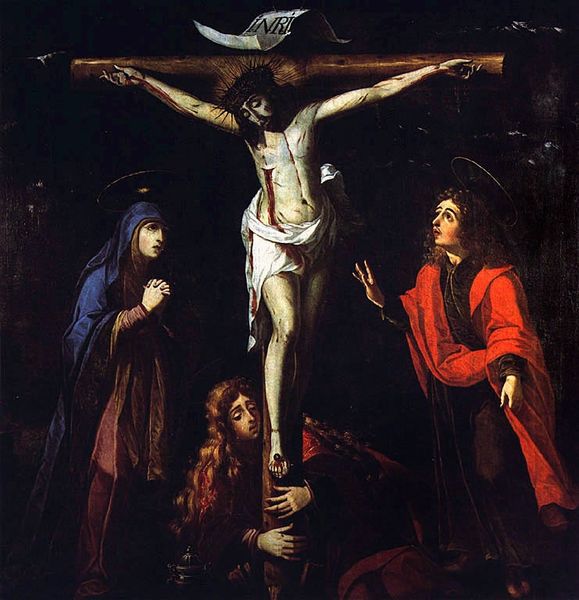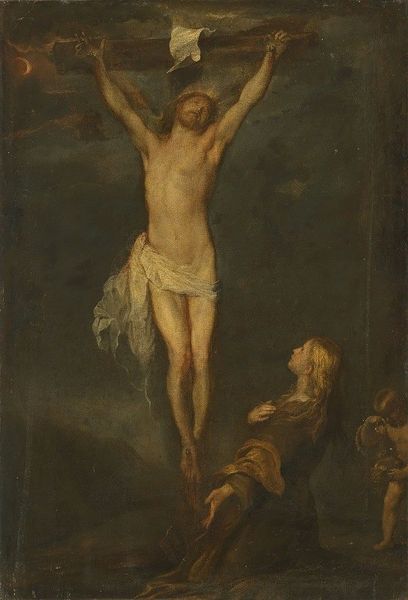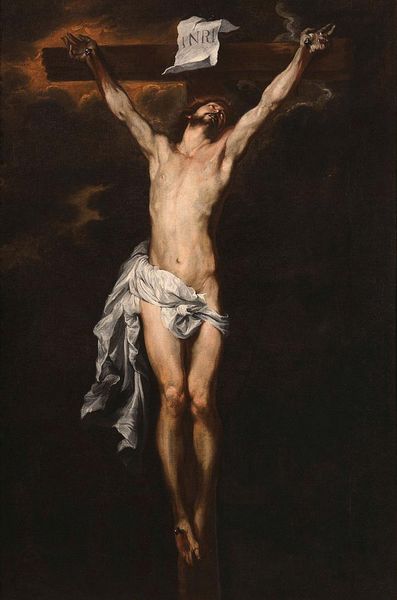
#
symbol
#
possibly oil pastel
#
oil painting
#
jesus-christ
#
portrait reference
#
portrait head and shoulder
#
underpainting
#
christianity
#
animal drawing portrait
#
portrait drawing
#
crucifixion
#
facial portrait
#
portrait art
#
fine art portrait
#
christ
Copyright: Public domain
Bartolomé Estebán Murillo painted this Crucifixion, now in the Hermitage Museum, in seventeenth-century Spain. It depicts Christ on the cross, surrounded by mourners. Paintings like this one, produced during Spain’s Golden Age, were not simply devotional objects but also powerful tools. In a country shaped by the Catholic Church, they served as potent reminders of faith and morality. Murillo's work reflects the social structures of his time. It reinforces the Church's teachings, reminding viewers of the importance of religious piety. We must also consider the institutional context in which art was created. Wealthy patrons or the Church commissioned art. Artists like Murillo relied on these institutions for their livelihoods, influencing the themes and styles they portrayed. Understanding the historical context of the painting allows us to appreciate it not just as a beautiful artwork, but also as a window into the past.
Comments
No comments
Be the first to comment and join the conversation on the ultimate creative platform.


